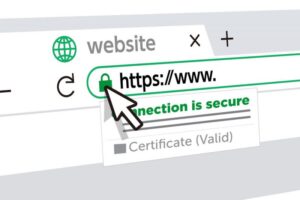As a website owner, whether you manage a professional website, an e-commerce platform, or need ongoing website maintenance, encountering bugs in your WordPress site is almost inevitable. But fret not, because mastering the art of bug fixing is a skill that can empower you to keep your website running smoothly. In this guide, we’ll explore the world of WordPress bug fixing, offering insights to help you navigate and resolve these common challenges. If you ever need expert assistance or have any questions, don’t hesitate to contact me at email: afhamzahid5@gmail.com or Phone: +92 315-3212271.
Table of Contents
Understanding the Types of WordPress Bugs
Before you can fix a bug, you need to identify its type. Bugs can range from PHP errors to CSS issues, or even problems with specific plugins or themes. Understanding the nature of the bug is the first step in effective troubleshooting.
Use Debugging Tools
WordPress provides built-in debugging tools to help identify issues by displaying error messages. Enabling WP_DEBUG in your wp-config.php file is a valuable way to uncover the source of the problem, especially if you’re unsure about the root cause.
Update WordPress Core, Themes, and Plugins
Outdated software can be a breeding ground for bugs. Ensure that your WordPress core, themes, and plugins are all up-to-date. Developers often release patches to address known issues.
Deactivate Plugins and Themes
If you suspect that a specific plugin or theme is causing the problem, a process of elimination can help pinpoint the issue. Deactivate them one by one and test to identify the culprit.
Check for Conflicts
Conflicts between plugins or themes can lead to bugs. Is the bug related to the interaction of two or more components? Disable and test different combinations to find the root cause.
Review Error Logs
WordPress generates error logs that provide information about what’s going wrong. Check your server’s error logs or use a plugin like Query Monitor to access valuable insights.
Test Different Browsers and Devices
Certain bugs may be specific to certain browsers or devices. Testing your site in multiple environments can reveal issues that only occur under certain circumstances.
Use a Version Control System
Version control, like Git, allows you to track changes and easily roll back to a working state if a bug emerges during development or updates.
Ask for Help
Don’t hesitate to reach out to WordPress forums, communities, or experts. The WordPress community is known for its willingness to help others, and you can often find solutions from experienced developers.
Documentation and Learning
Keep a record of the bugs you encounter and the solutions you discover. This serves as a valuable reference for the future. Continuous learning and staying updated with best practices is also crucial.
Conclusion
Bug fixing is an integral part of website management, and mastering it is a valuable skill for any website owner, whether you manage a professional website, an e-commerce platform, or require website maintenance. By understanding the types of bugs, using debugging tools, and following a systematic approach, you can become a proficient bug hunter in the world of WordPress.
Bugs are not roadblocks; they’re opportunities for growth and learning. They challenge you to become a better website owner and provide the satisfaction of overcoming obstacles in your WordPress journey.
If you ever find yourself facing a particularly tricky bug or need expert assistance, don’t hesitate to reach out to me at email: afhamzahid5@gmail.com or Phone: +92 315-3212271. I’m here to help you navigate these challenges and ensure your website runs smoothly.




